
Fiat 500L Hatchback engines, drive and performance

From launch there are four engines to choose from and, while Fiat 500L performance isn’t breathtaking, each is good enough for a car that is likely to be used mainly around city centres. The two petrol options include the 0.9-litre TwinAir and the standard 1.4-litre petrol engine. Both engines have been used in a number of other models across the rest of the Fiat range. The 0.9-litre TwinAir, with its turbocharger and intercooler, produces 105bhp and 145Nm of pulling power. It will power the 500L from zero to 62mph in 12.3 seconds. The 1.4-litre petrol engine makes 95bhp and will cover the same benchmark sprint in a slightly slower 12.8 seconds. This engine is good for ambling around town or getting a head start against other traffic. Get in on a longer stretch of motorway and its weakness begins to be exposed a little. Attempt to overtake slower traffic and you’ll need to drop down a gear or two. Under this kind of acceleration the engine begins to feel a bit strained too. Once up to motorway speeds it handles things well. Both the petrol engines are fitted with a six-speed manual gearbox. This can feel a little notchy at times, not very accurate and far from the smoothest attempt in this sector. The diesels available are the 1.3-litre and 1.6-litre MultiJet II, producing 85bhp and 200Nm and 105bhp and 320Nm of pulling power, respectively. This helps it reach 62mph from standstill in 14.9 seconds in the 1.3. While it’s more than 2 seconds slower than the petrol equivalents, it’s not too noticeable due to the extra power at the lower end of the rev range. This low-down pulling power proves useful for getting ahead of traffic, though the diesels are only worth the added premium if you’re likely to be doing more motorway miles than tackling inner-city traffic. The 1.3-litre diesel engine is paired with a five-speed manual gearbox, the 1.6-litre gaining an extra ratio. Neither feels up to the same standards of those found in the Skoda Roomster and Hyundai ix20.
New for 2014
In March 2014 two new engines join the range, a 1.6 MultiJet II turbodiesel and a 1.4 T-Jet petrol engine. Both are turbocharged with 118bhp available.
The 1.6 MultiJet II, as well as being Euro 6 type-approved also comes with some good headline figures with CO2 emissions of 120g/km and an official fuel consumption figure of 61.4mpg.
Performance has not been compromised however with a top speed of 117mph and a 0-62mph time of 10.7 seconds for the diesel.
The 1.4 T-Jet petrol, performance also fares well with an identical top speed but an improved 10.2 seconds on the 0-62mph sprint. CO2 emissions sit at 159g/km and the official fuel consumption figure is 40.9mpg.
On the road both engines impress with plenty of pull at lower gears and a smooth performance while cruising on the motorway.
The Fiat 500L performs just as you might expect for a small MPV targeted at those living in the city. The steering is nice and light, making tight manoeuvres simple, while the ‘City’ button takes this a step further for when you find yourself in a really tight situation. The steering does weight up a little at higher speeds for added composure, though not to a point where you can take corners at high speeds with confidence. This is a city car after all, and as such Fiat 500L handling is biased towards being easy to drive. The steering does lack sharpness, however, and it’s not quite as direct as it perhaps should be. The high body means there is some lean in the corners but that’s the compromise drivers must make when they want a car with the kind of headroom on offer here. In terms of ride quality, the 500L is sufficient. There is a choice of 15-inch to 17-inch wheels. The 17-inch versions do show up any uneven road surfaces a little more, but isn’t going to leave you begging for mercy after a short trip across cobblestones. It deals with larger problems potholes and problems ok though. For greater agility is the off-roader inspired Trekking version. Although it has raised ground clearance, it remains front wheel drive, using Fiat’s ‘Traction+’ system and ‘Mud&Snow’ tyres for additional grip on loose and slippery surfaces. While the raised ride height affords greater visibility of the road, it also makes it roll more in corners.
Fiat 500L Trekking
The higher ride height offered on the Trekking model does mean a little more body-roll, but this is off-set by the enhanced off-road capability from the increased ground clearance coupled with the mud and snow tyres and the Traction+ system. The latter works with the electric traction and stability control systems to brake a spinning wheel and transfer torque to the wheel with most grip. This means it can handle mild off-roading with ease, although tougher courses will pose a bigger challenge.


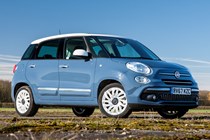






.jpg)
.jpg)
.jpg)
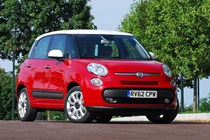
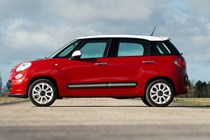
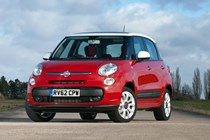
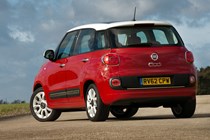

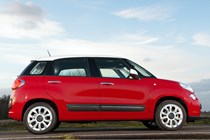
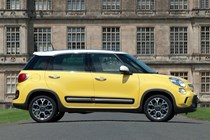
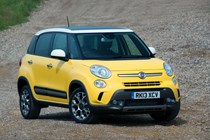

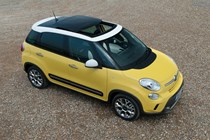
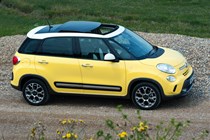
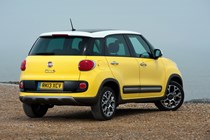





.jpg)

.jpg)
.jpg)
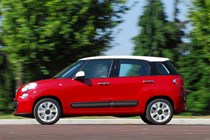
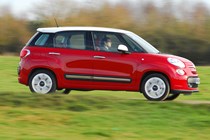
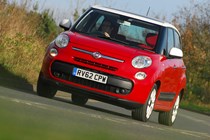
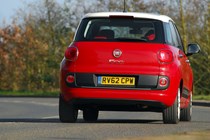
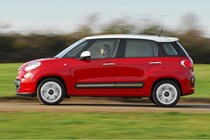
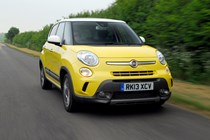
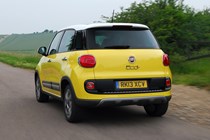




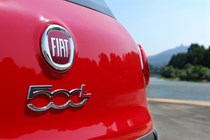
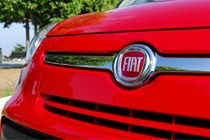
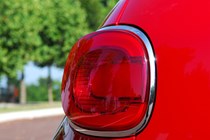
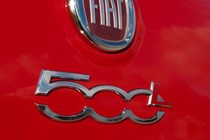
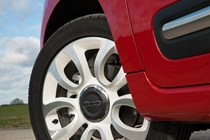
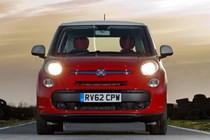
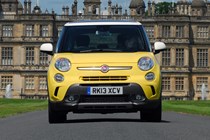


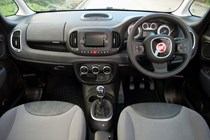








.jpg)
.jpg)
.jpg)
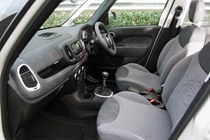
.jpg)
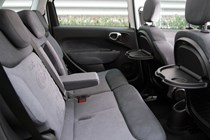
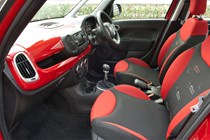
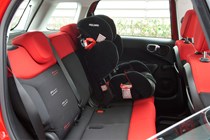
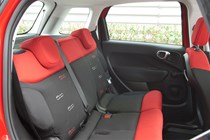
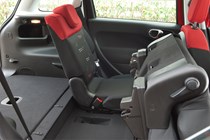
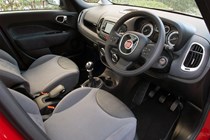

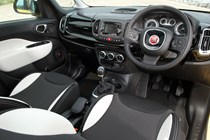
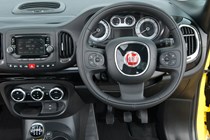
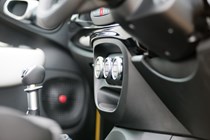
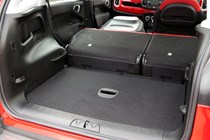
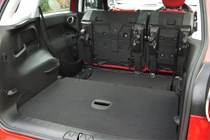
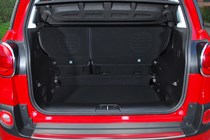
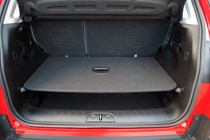
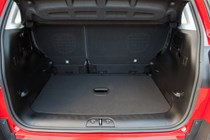
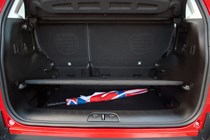
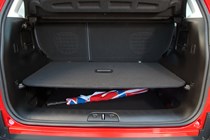
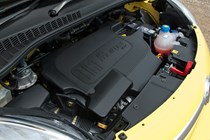
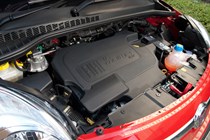
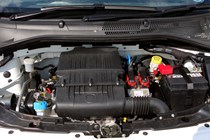







.jpg?quality=50)
.jpg?quality=50)
.jpg?quality=50)

















.jpg?quality=50)

.jpg?quality=50)
.jpg?quality=50)





























.jpg?quality=50)
.jpg?quality=50)
.jpg?quality=50)

.jpg?quality=50)



















